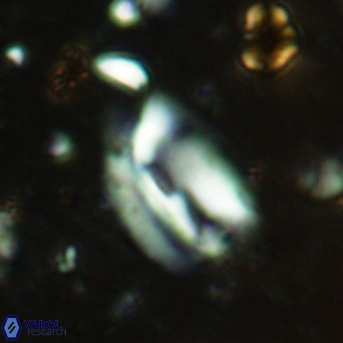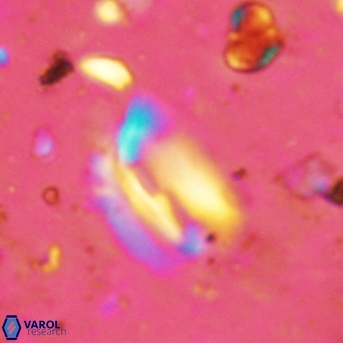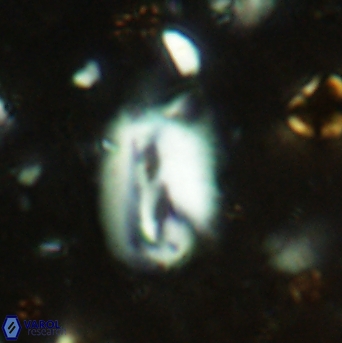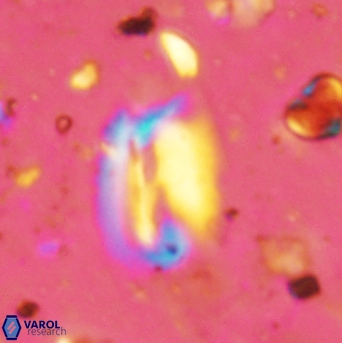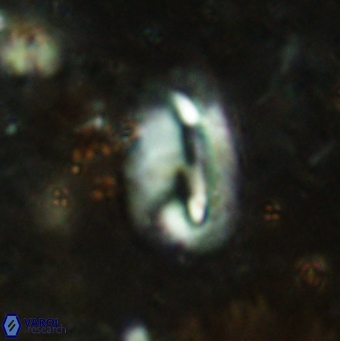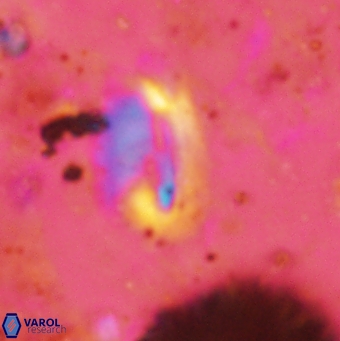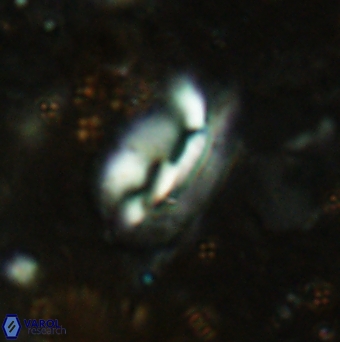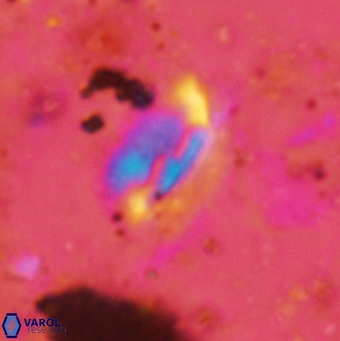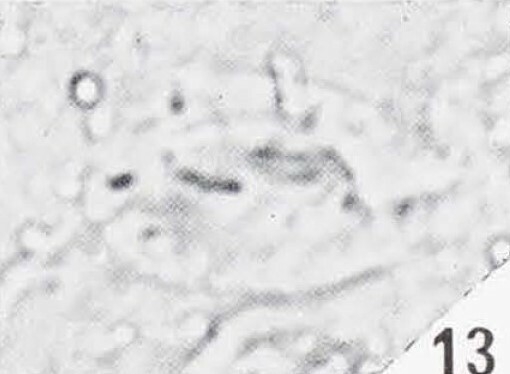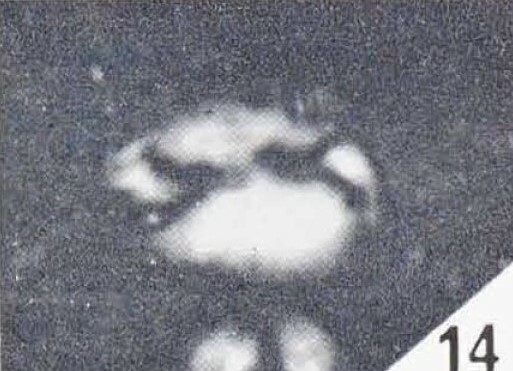Helicosphaerella obliqua
Set number: 290
-
1
-
2
-
3
-
4
10µm
Set number: 300
-
1
-
2
10µm
Helicosphaera obliqua Bramlette & Wilcoxon, 1967
Ovoid shape (narrower at flange termination end) helicolith having an asymmetrical blanket ( Type II, Helicosphaerella recta type), truncated flange termination and a central opening that is spanned by an inverse conjunct bar creating slit-like perforation on both sides of the bar.
The initial section of the flange from the origin is inversely oriented and makes an acute angle with the final termination.
Helicosphaerella obliqua differs from Helicosphaerella truncata (Bramlette & Wilcoxon, 1967) Aubry, Liu, de Vargas, & Probert in Aubry & Bord (2009) and Helicosphaerella recta (Haq, 1966) Aubry, Liu, de Vargas, & Probert in Aubry & Bord (2009) by having an inverse bar whereas the latter species have traverse bars.
Moreover, the initial section of the flange from the origin is inversely oriented in Helicosphaerella obliqua and makes an acute angle with the final termination whereas the transversely oriented initial section of the flange from the origin is making about the right angle with the final termination in Helicosphaerella truncata and Helicosphaerella recta.
Helicosphaerella obliqua is distinguished from Helicosphaerella perch-nielseniae (Haq, 1971) Aubry, Liu, de Vargas, & Probert in Aubry & Bord (2009) by being ovoid shape (narrower at the flange termination end) and having distinct inverse pores whereas the latter has a rectangular shape and indistinct inverse slits (only seen at 45° in polarised light and under SEM.
Helicosphaerella obliqua is further differentiated from Helicosphaerella perch-nielseniae by having an acute angle between its initial section of the flange from the origin and its final termination. This is a right angle in Helicosphaerella perch-nielseniae. The initial section of the flange from the origin is inversely oriented in both species.
Aubry, M. -P. & Bord, D. 2009. Reshuffling the cards in the photic zone at the Eocene/Oligocene boundary. In: Koeberl, C., Montanari, A. (eds), The Late Eocene Earth-Hothouse, Icehouse, and Impacts. Geological Society of America, Special Papers 452: 279-301.
Bramlette, M. N. & Wilcoxon, J. A. 1967. Middle Tertiary calcareous nannoplankton of the Cipero section, Trinidad, W.I. Tulane Studies in Geology and Paleontology 5: 93-131.
Haq, B. U., 1966. Electron microscope studies on some upper Eocene calcareous nannoplankton from Syria. Stockholm Contributions in Geology 15, 23-37.
Haq, B. U. 1971. Paleogene calcareous nannoflora. Parts I-IV. Stockholm Contributions in Geology 25: 1-158.
Jafar, S. A., Martini, E., 1975, On the validity of the calcareous nannoplankton genus Helicosphaera. Senckenbergiana Lethaea 56, 381-397.
